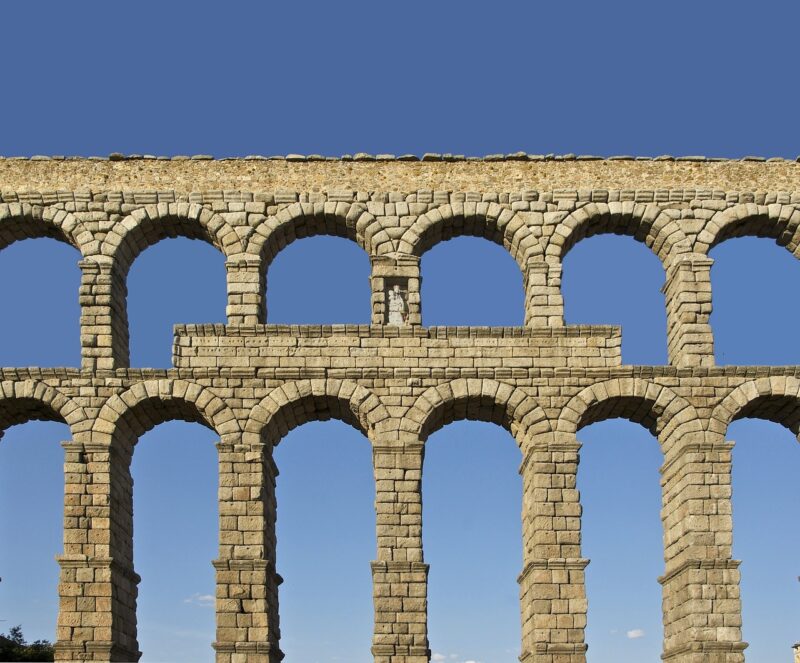
The marvel of ancient engineering, aqueducts were not merely structures built for the transport of water; they were a testament to human ingenuity, blending functionality with artistry. Originating in ancient civilizations like Rome, aqueducts have become iconic symbols of engineering prowess, still standing in various forms today, often serving as historical monuments that educate and inspire. In this article, we delve into the history, technology, and impact of aqueducts, highlighting how ancient engineers managed to construct these impressive structures that continue to endure through the centuries.
1. The Inception of Aqueducts: A Historical Overview
The earliest documented aqueducts trace back to approximately 600 B.C., with civilizations such as the Assyrians and Romans initiating the movement of water to urban areas. The term “aqueduct” stems from the Latin words “aqua” (water) and “ducere” (to lead), which aptly describes their primary function.
Aqueducts were crucial for supplying water to growing cities, enabling the development of agriculture, sanitation, and public baths. The Roman Empire, in particular, is renowned for its vast network of aqueducts, which stretched over 500 miles by the 3rd century A.D. These structures were often built with a combination of gravity, sedimentation, and siphoning techniques, demonstrating an exceptional understanding of hydraulics and engineering.
2. Engineering Principles Behind Aqueducts
Aqueducts exhibit a remarkable blend of art and science, utilizing geometry and terrain to navigate the complexities of transporting water. Here are some key engineering principles employed by ancient engineers:
- Gradient Design: A consistent gradient was crucial to maintaining a steady flow of water. Engineers would assess the landscape and create a slight incline, ensuring the water flowed from a higher source to a lower destination via gravity.
- Materials Used: Ancient engineers used materials such as stone, brick, and cement to construct durable structures. The Roman use of pozzolana, a volcanic ash, allowed for the creation of robust hydraulic concrete that could endure the test of time.
- Arches and Bridges: To traverse valleys and uneven terrain, arches were a significant architectural feat. The use of arches distributed weight evenly and allowed for the creation of elevated aqueducts, minimizing the potential for water loss via evaporation or contamination.
Each aqueduct system was tailored to fit the local environment, showcasing the engineers’ ingenuity and adaptability, which allowed them to overcome geographical challenges.
3. Notable Examples of Ancient Aqueducts
While many aqueducts have fallen into disrepair, some still stand today as a testament to ancient engineering. Let’s explore several iconic examples:
- The Aqua Appia (Rome, 312 B.C.): As the first Roman aqueduct, the Aqua Appia stretched over 16 kilometers and primarily operated underground. Its durability and efficient design laid the groundwork for future aqueducts.
- The Pont du Gard (France): A UNESCO World Heritage site, this aqueduct bridge is a stunning example of Roman engineering, featuring three tiers of arches reaching a height of approximately 50 meters. It supplied water to the city of Nîmes and is still remarkably preserved today.
- The Segovia Aqueduct (Spain): Constructed in the late 1st century A.D., this impressive structure comprises 167 arches and remains one of the best-preserved Roman aqueducts. Standing over 28 meters tall, it continues to supply water to the city of Segovia even today.
These examples underscore the diverse applications and enduring nature of aqueduct engineering.
4. The Role of Aqueducts in Urban Development
As cities grew, so did the demand for efficient water supply systems. Aqueducts played an integral role in supporting urbanization, allowing societies to thrive in previously inhospitable areas. This increased access to water facilitated the development of public baths, fountains, and sanitation systems. The availability of water transformed public health, reducing disease transmission and improving overall quality of life.
Moreover, the construction of aqueducts had a profound impact on trade and commerce. Water supply enabled agriculture, leading to surplus food production that supported growing populations and the emergence of markets.
5. Preservation and Legacy of Aqueducts Today
As we marvel at the ingenuity of ancient engineers, the importance of preserving these historical structures is paramount. Efforts to maintain and restore aqueducts are vital, and many sites have become significant tourist attractions.
Preservation initiatives include:
- Restoration Projects: Many governments and historical societies are actively working to restore and maintain aqueducts, ensuring they remain standing for future generations.
- Education Programs: Educational programs highlighting the historical significance and engineering marvels of aqueducts foster appreciation and awareness among the public.
- Sustainable Tourism: Developing sustainable tourism strategies contributes both to the economy and conservation of aqueduct sites.
The lessons learned from aqueducts—such as sustainability, urban water management, and engineering principles—remain relevant today as we face global challenges related to water scarcity and infrastructure development.
Conclusion
Aqueducts symbolize the convergence of art and science, showcasing the capabilities of ancient engineers whose designs and techniques resonate to this day. They serve as reminders of the importance of innovation in addressing everyday needs like water supply. As we stand before these historical structures, we not only admire their aesthetic appeal but also reflect on the engineers’ foresight, which continues to influence modern civil engineering practices.
In an era marked by rapid technological advancement, the study of ancient aqueducts offers invaluable lessons about resilience, sustainability, and the enduring need for effective infrastructure. As we work towards solutions for current water management challenges, we can look to the ingenuity of the past for inspiration to build a future that honors the legacy of these remarkable structures.








